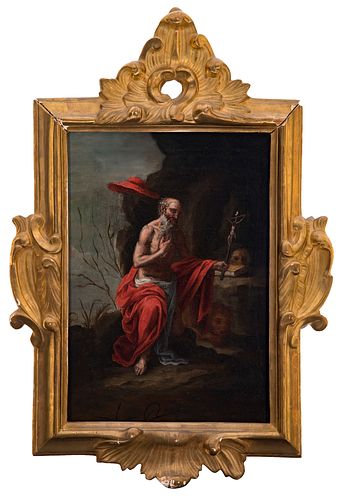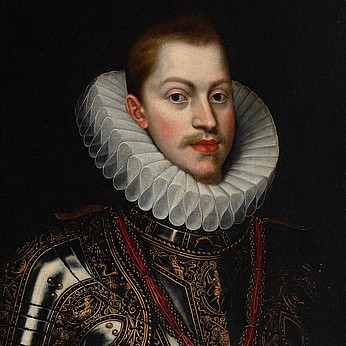Spanish school; second half of the XVII century. "Penitent St. Jerome". Oil on canvas.
Lot 36
About Seller
Setdart Auction House
Carrer Aragó 346
Barcelona
Spain
Setdart Subastas was born in 2004 and is currently the first online art auction in Spain with solidity, prestige and reliability guaranteed by our more than 60,000 users. Setdart has a young, dynamic and enterprising team ready to successfully manage the purchase and sale of art works through custom...Read more
Estimate:
EUR€2,500 - EUR€3,000
$2,604.17 - $3,125
Absentee vs Live bid
Two ways to bid:
- Leave a max absentee bid and the platform will bid on your behalf up to your maximum bid during the live auction.
- Bid live during the auction and your bids will be submitted real-time to the auctioneer.
Bid Increments
| Price | Bid Increment |
|---|---|
| EUR€0 | EUR€10 |
| EUR€200 | EUR€25 |
| EUR€500 | EUR€50 |
| EUR€1,000 | EUR€100 |
| EUR€3,000 | EUR€200 |
| EUR€5,000 | EUR€500 |
| EUR€10,000 | EUR€1,000 |
| EUR€20,000 | EUR€2,000 |
| EUR€50,000 | EUR€5,000 |
About Auction
By Setdart Auction House
Nov 24, 2021
Set Reminder
2021-11-24 09:00:00
2021-11-24 09:00:00
America/New_York
Bidsquare
Bidsquare : Old Masters, Day 1
https://www.bidsquare.com/auctions/setdart-auction-house/old-masters-day-1-7873
Setdart Auction House sofia@setdart.com
Setdart Auction House sofia@setdart.com
- Lot Description
Spanish school; second half of the XVII century. "Penitent St. Jerome". Oil on canvas. It has slight repainting. Measurements: 39 x 29,5 cm; 59,5 x 41,5 cm (frame). This canvas deals with the theme of St. Jerome penitent in the desert. Thus, the saint is shown seated and placing his left hand on his heart in a pious attitude, which is reinforced by the presence of the crucifix that he holds in his right hand. The scene is completed with the presence of the characteristic attributes of Saint Jerome, such as the book, the skull and the cardinal's hat. During the 17th century the image of the saint became popular, being the protagonist of numerous artistic manifestations. This was due to the Christian tradition that establishes Saint Jerome as the translator of the Bible, thus transforming the sacred scriptures into a Latin text accessible to a wider public. This version of the Bible, known as the Vulgate, was declared the official version during the Council of Trent 1546. One of the four great Doctors of the Latin Church, St. Jerome was born near Aquileia (Italy) in 347. Trained in Rome, he was an accomplished rhetorician and polyglot. Baptized at the age of nineteen, between 375 and 378 he retired to the Syrian desert to lead an anchorite's life. He returned to Rome in 382 and became a collaborator of Pope Damasus. One of the most frequent representations of this saint is his penance in the desert. His attributes are the stone he uses to beat his chest and the skull on which he meditates. Also the cardinal's cape (or a red mantle), although he was never a cardinal, and the tamed lion. The latter comes from a story of the "Golden Legend", where it is narrated that one day, when he was explaining the Bible to the monks of his convent, he saw a lion coming with a limp. He removed the thorn from its paw, and from then on he kept it in his service, instructing it to look after his donkey while it grazed. Some merchants stole the donkey, and the lion recovered it, returning it to the saint without hurting the animal.
- Shipping Info
-
In-house shipping available. Please inquire at admin@setdart.com.
-
- Buyer's Premium



 EUR
EUR CAD
CAD AUD
AUD GBP
GBP MXN
MXN HKD
HKD CNY
CNY MYR
MYR SEK
SEK SGD
SGD CHF
CHF THB
THB
















